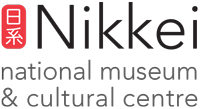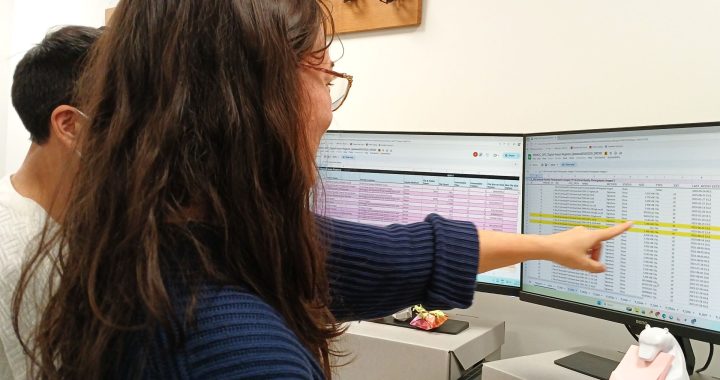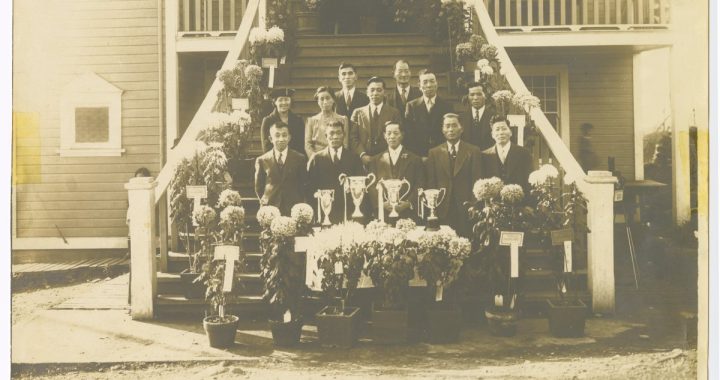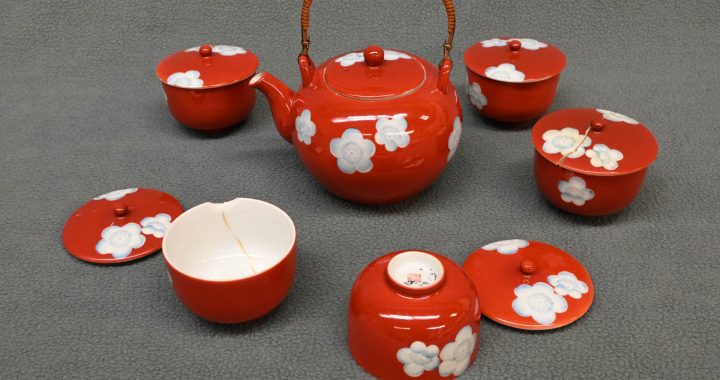Today is #AskAnArchivist Day and we want to share a behind-the-scenes look at some of the tasks and projects that our Collections & Archives Team are involved in.
As well as facilitating access to collections for families and researchers, our team’s work varies day to day and can include:
Supporting exhibitions with condition reports
Many of the items in our collections are featured in our exhibits or are loaned to external institutions like the Canadian Museum of History and Vancouver Art Gallery. Here, Sakura, Collections Assistant, is completing a condition report for an item included in our current exhibit, Beautifully Broken – Kintsugi by Naoko Fukumaru. She reviews the item for any damage that may impact display or handling and notes any markings or wear. Once the exhibit is complete, staff will conduct another condition report to review if there have been any changes to the item before returning it to storage.
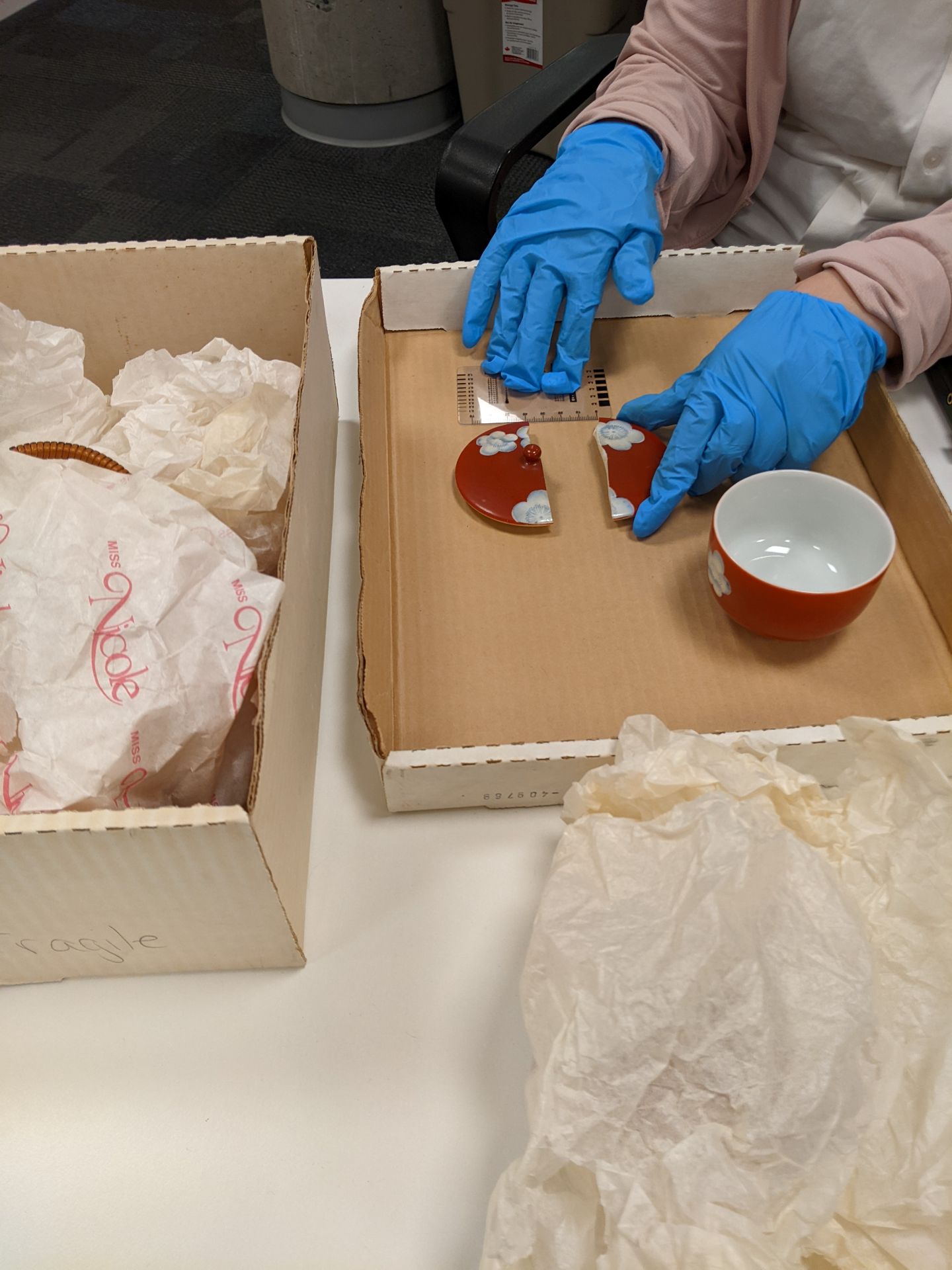
Connecting with community members for research support, donations, and external outreach events
The community plays an integral role in the work we do so there are many opportunities for connection and to bring a richer understanding to the items entrusted to our care. When preserving physical items in our collection, we also want to preserve the stories and history of these items. We regularly consult with families and individuals about their family history, memories, and any identifications of names, locations, and dates that they can offer to provide the full picture of each item. We also connect with community members outside of our space, attending festivals and events like Powell Street Festival and partnering with other Japanese Canadian and heritage organizations.
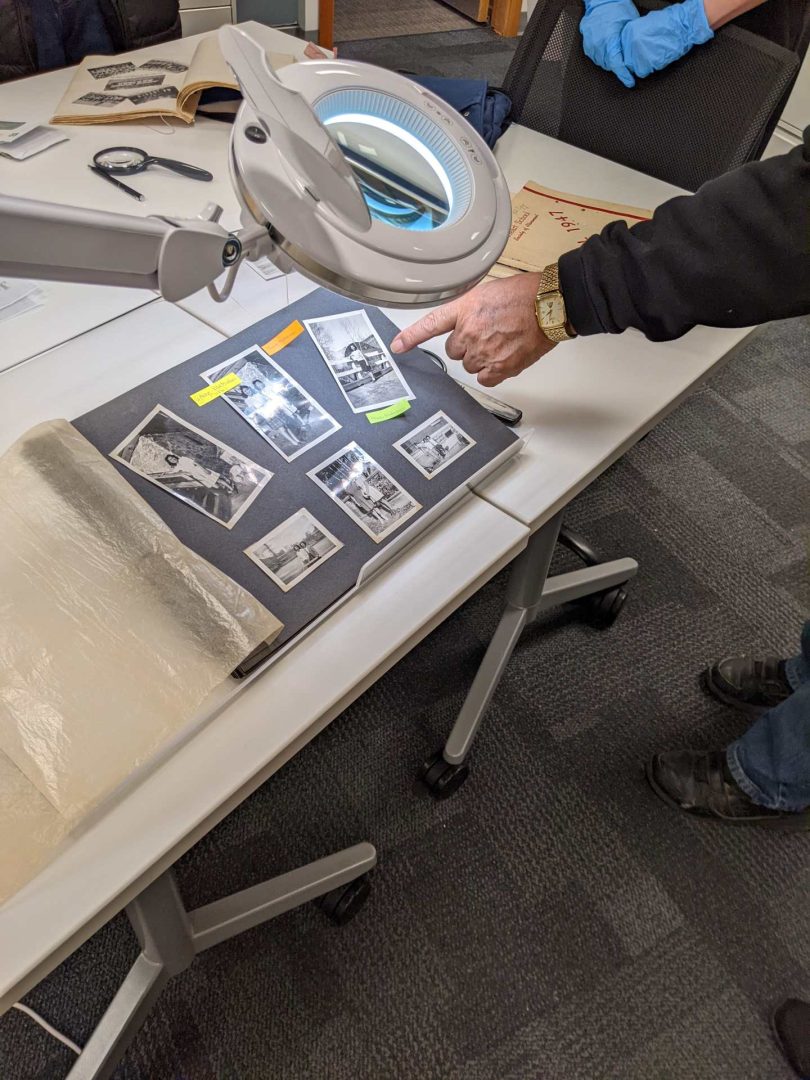
Preservation of film and other audiovisual materials
The Nikkei National Museum & Cultural Centre is home to a growing collection of films, videos, and sound recordings ranging from the 1920s to the 2000s. When films such as 16mm, 8mm, and super 8 home movies are donated to the museum, Jeffery, our Media Conservation Technician, will inspect and give a detailed condition report for each film. He will carefully examine each reel and make any necessary repairs, such as fixing damaged perforations and replacing broken and weak splices. These necessary repairs prepare the film for digitization and long term preservation. Once they are digitized, the original films are placed in storage, while their digitized copies are made available for access, research, and/or exhibition.
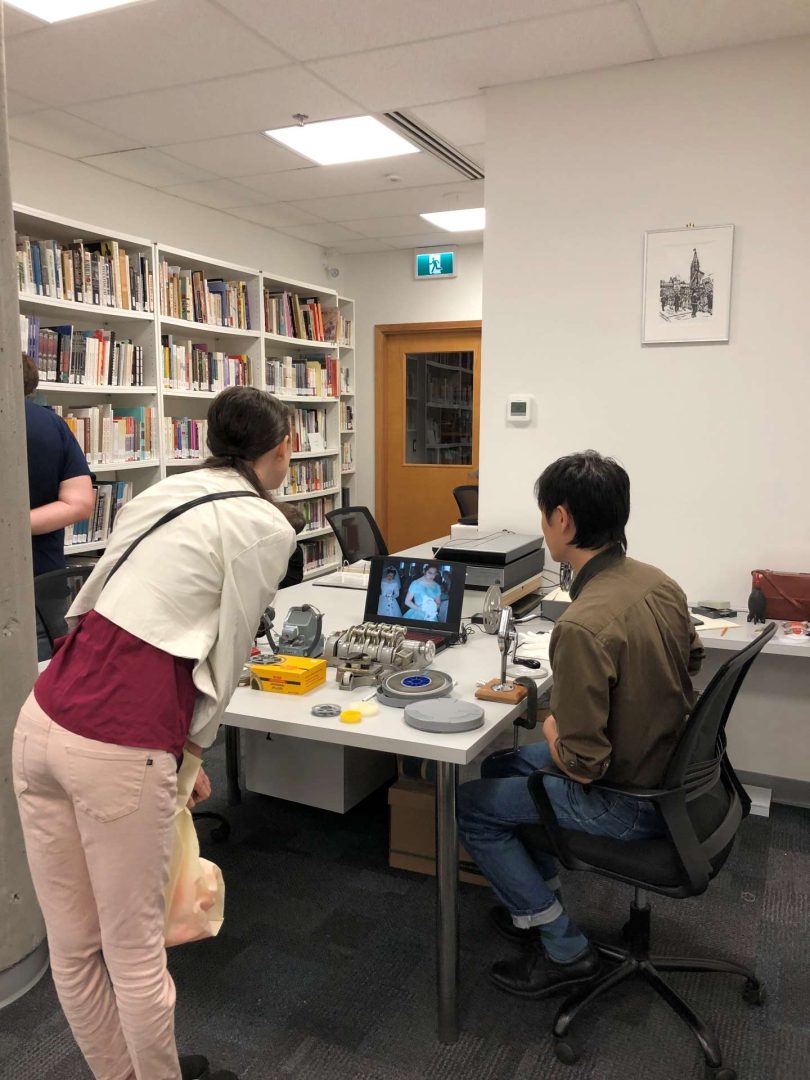
Cataloguing new additions to our reference library
The reference library in the Charles H. Kadota Resource Centre has over 1500 books relating to Japanese Canadian history and heritage, as well as Indigenous and local history, Japanese culture, Japanese American and Hawaiian history, Japanese Brazilian history, and other diaspora communities. We have a range of books in English and Japanese, with some publications available in French and Portuguese, that span from early immigration to the present. Our Librarian, Keiko, and our library volunteers review book donations from families, authors, and publishers for inclusion in our library. Those that fit our mandate are then catalogued, which includes adding it to our database and assigning it a call number based on our in-house Japanese Canadian classification scheme. Some recent additions to the library include The Gate of Memory: poems by descendants of Nikkei wartime incarceration edited by Brandon Shimoda and Brynn Saito, Mary Kitagawa: a Nikkei Canadian Life by Karen M. Inouye, and Kage no kikan 影の帰還 (= The return of a shadow) by Kunio Yamagishi (author) and Nobuo Kamioka (translator).
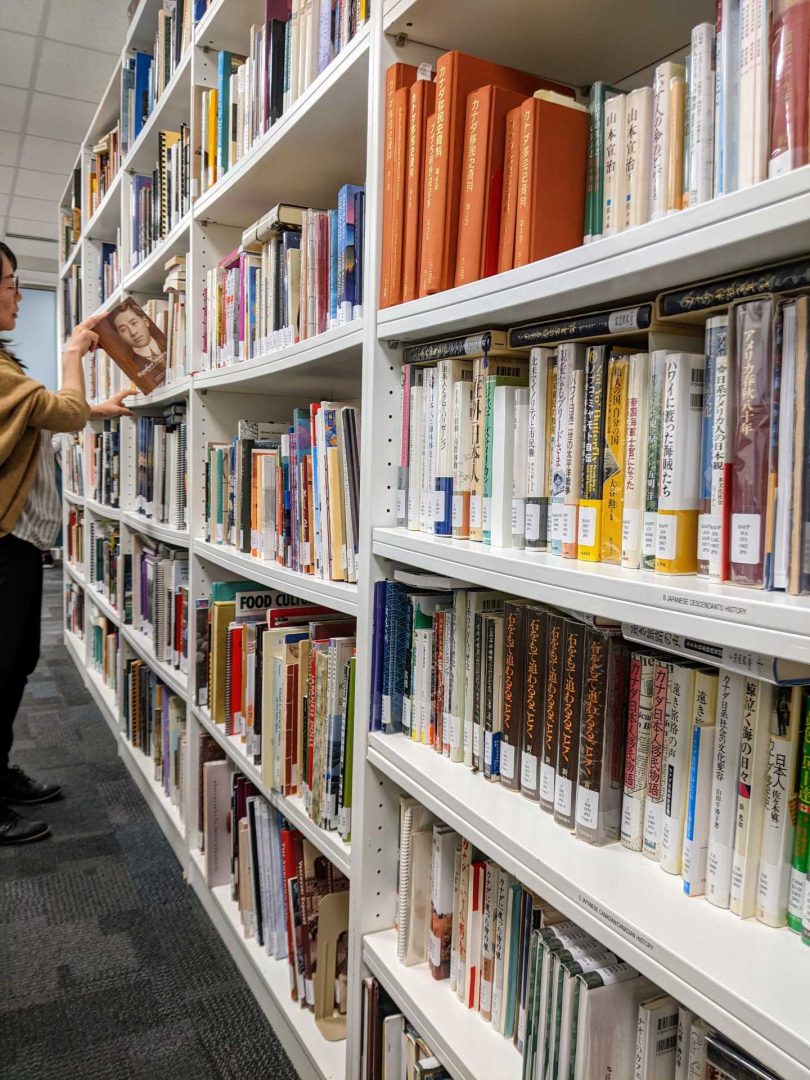
Carrying out conservation cleaning for items with dust, mould, or pest damage
All donations and loans received by the NNMCC are inspected and gently cleaned to help mitigate potential damage and keep our spaces clean. When cleaning items that may have dust, mould, or pests, it is always important to ensure that the health of our staff is protected. For conservation cleaning, we wear lab coats, goggles, gloves, and masks to limit our exposure to any harmful materials. Items are gently cleaned by using soft bristle brushes to lift any dirt, pests, or mold spores towards a vacuum with a HEPA filter. Once cleaned, the items can be safely handled by staff and researchers.
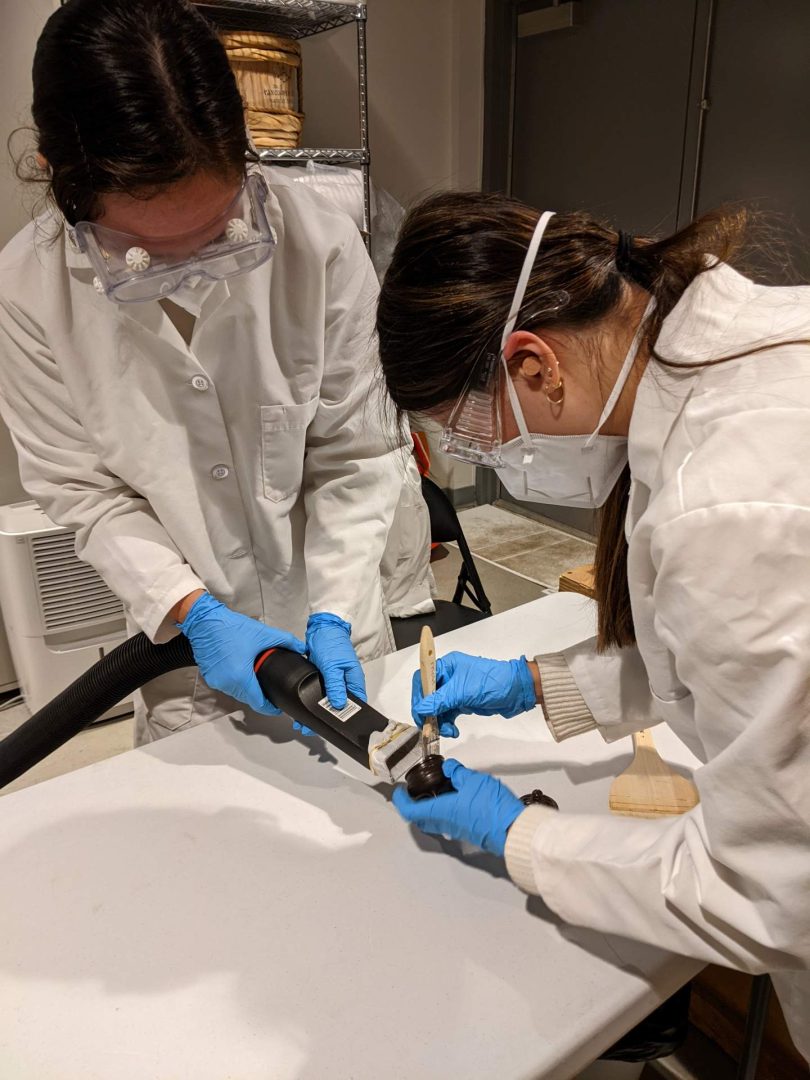
If you have any questions about archives or how to get started with your research, feel free to leave us a comment below or contact us at [email protected] or 604-777-7000 ext 111.
